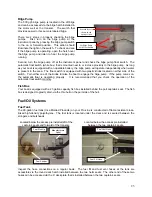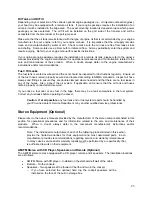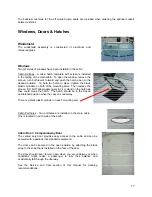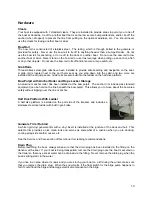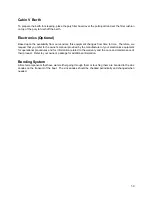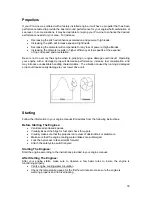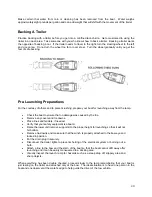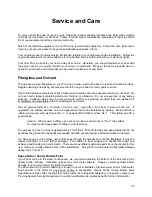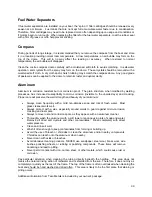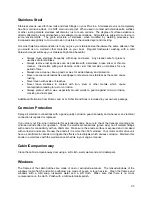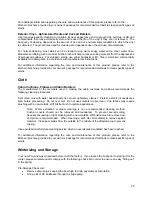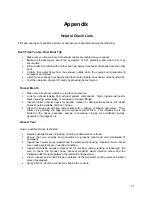
Propellers
If your Pro-Line was ordered with a factory installed engine, it will have a propeller that has been
performance tested to provide the best all-round performance for your engine/hull combination at
sea level. In some situations, it may be desirable to re-prop your Pro-Line to enhance the desired
performance needs for your area. For instance:
•
Decreasing the pitch will enhance acceleration and power at high loads.
•
Increasing the pitch will increase speed at light loads.
•
Decreasing the diameter will compensate for any loss of power at high altitudes.
•
Increasing the diameter results in higher efficiency at low speeds at the expense
of top end speed and acceleration.
Be sure not to over rev the engine when re-propping or engine damage could result. Operating
your engine with a damaged prop will decrease performance, increase fuel consumption, and
may introduce undesirable handling characteristics. The vibration caused by running a damaged
prop could cause costly damage to your lower drive unit.
Starting
Follow the information in your engine manual if it deviates from the following instructions.
Before Starting The Engines:
•
Ventilate all enclosed spaces.
•
Visually inspect the bilge for fuel and check for vapors.
•
Visually make sure that the propellers are clear of obstructions or swimmers.
•
Make sure that the engine cooling water intakes are submerged.
•
Lock the helm seat to face straight forward.
•
Attach the safety stop switch lanyard.
Starting The Engines:
Start the engine according to the instructions provided in your engine manual.
After Starting The Engines:
After your engine starts, make sure to observe a few basic rules to insure the engine is
functioning properly:
•
Verify engine cooling water circulation.
•
Check the temperature gauge for the first few minutes to make sure the engine is
warming properly and not overheating.
36


